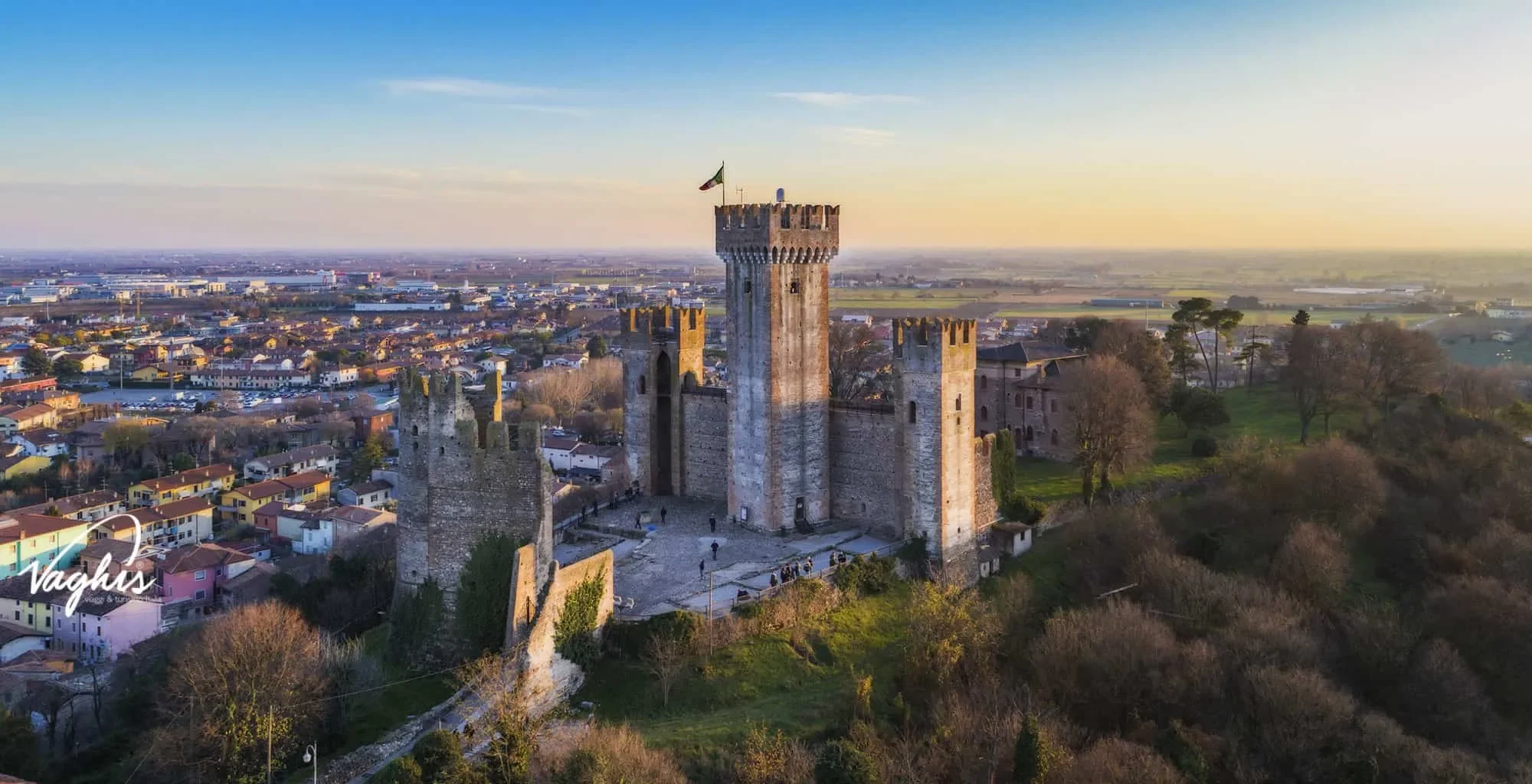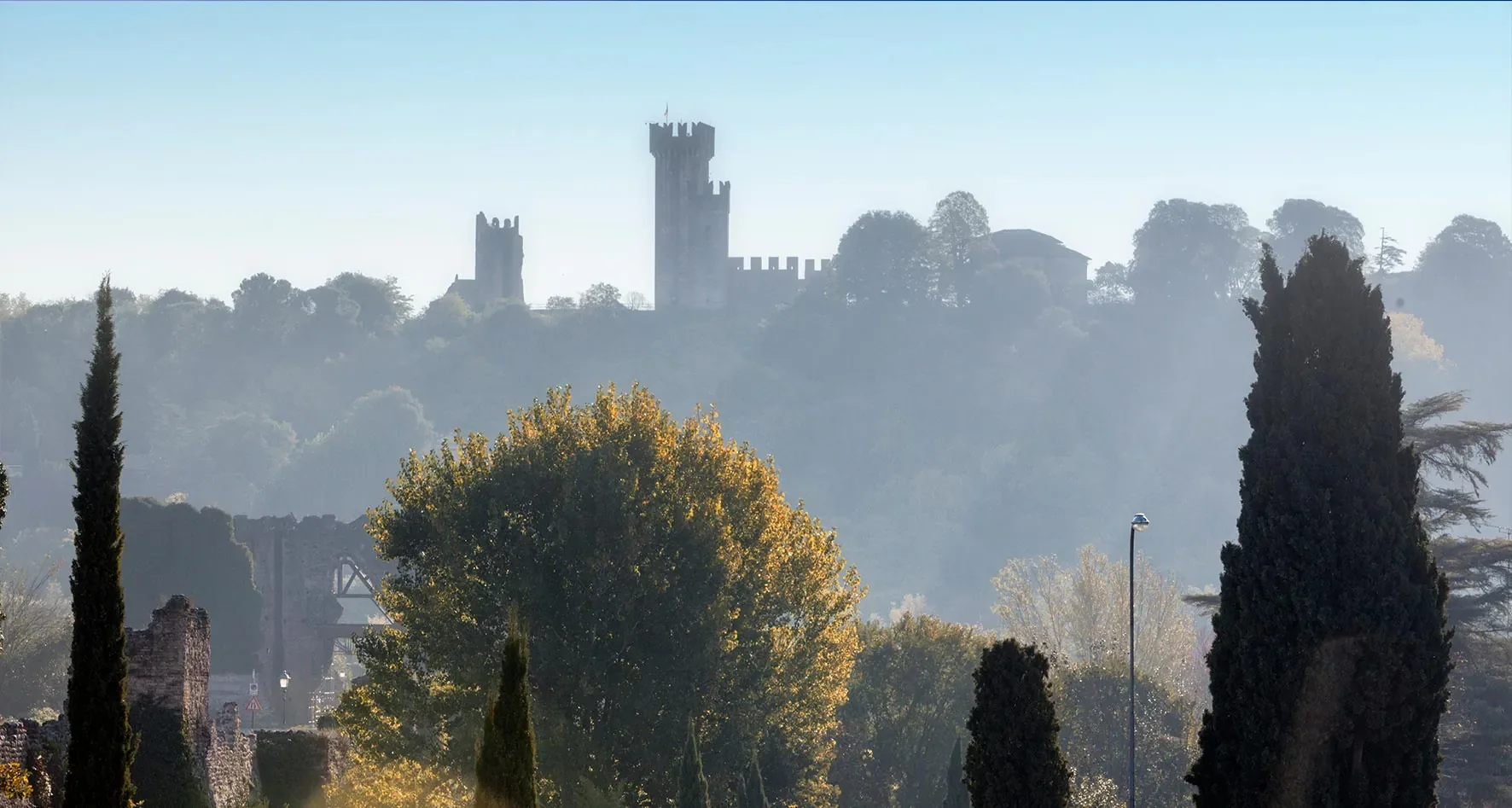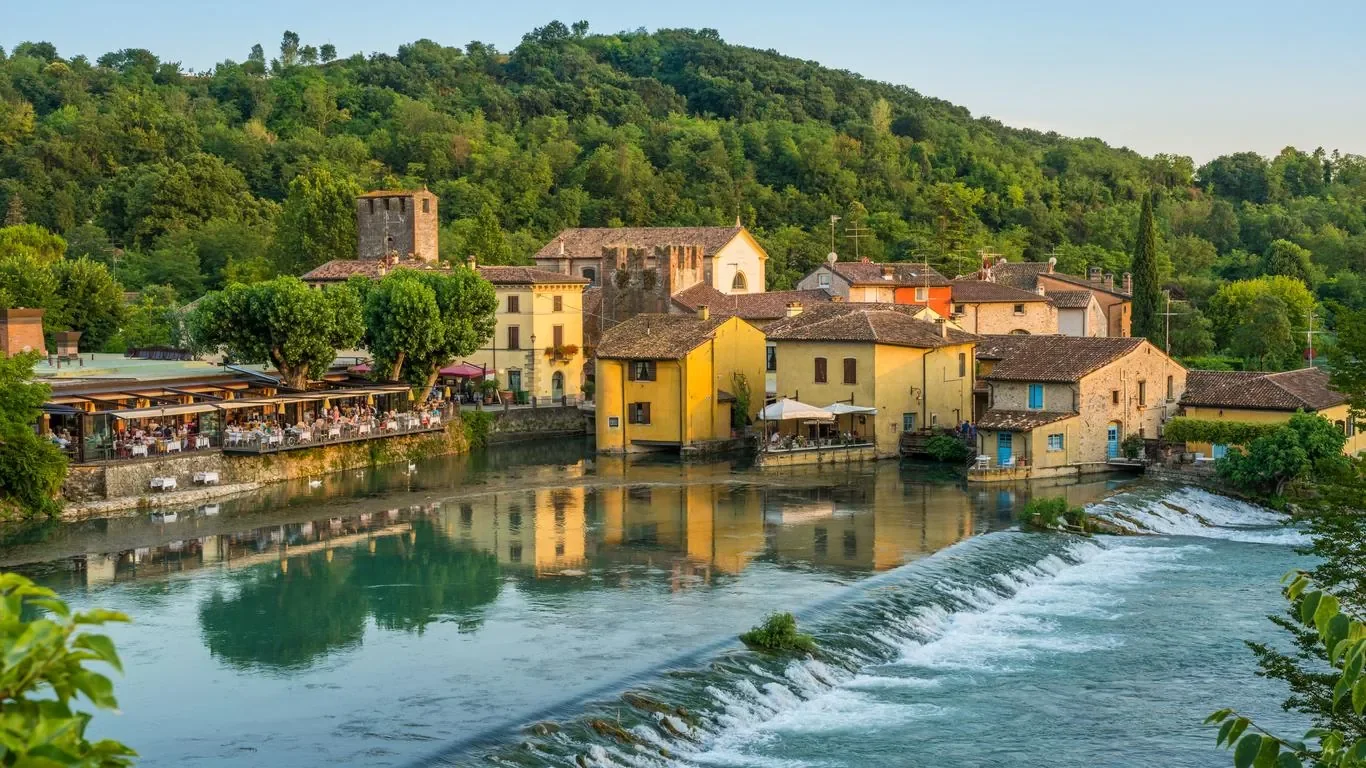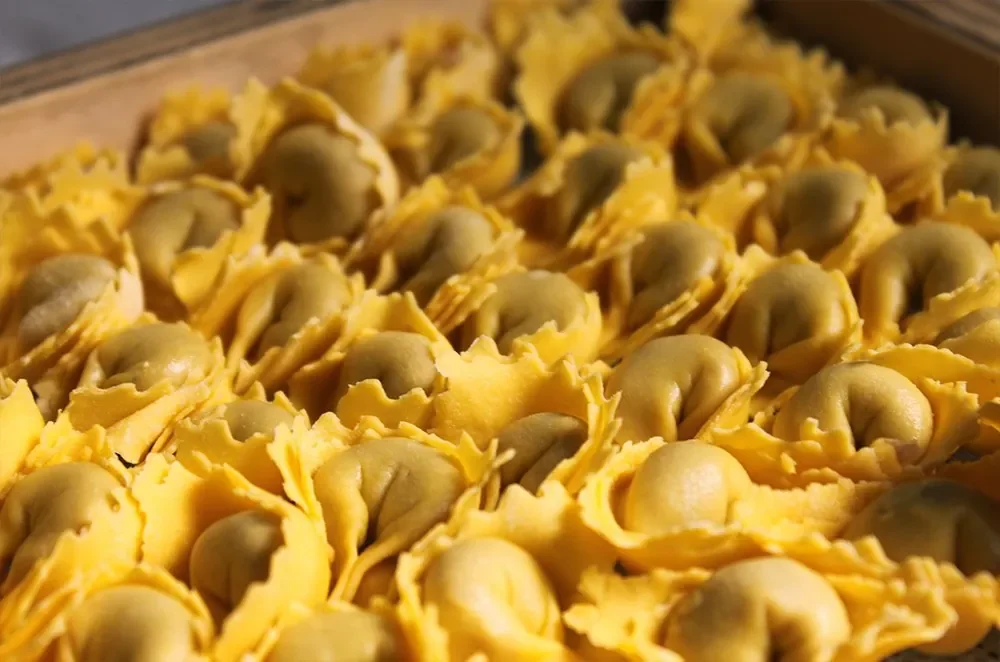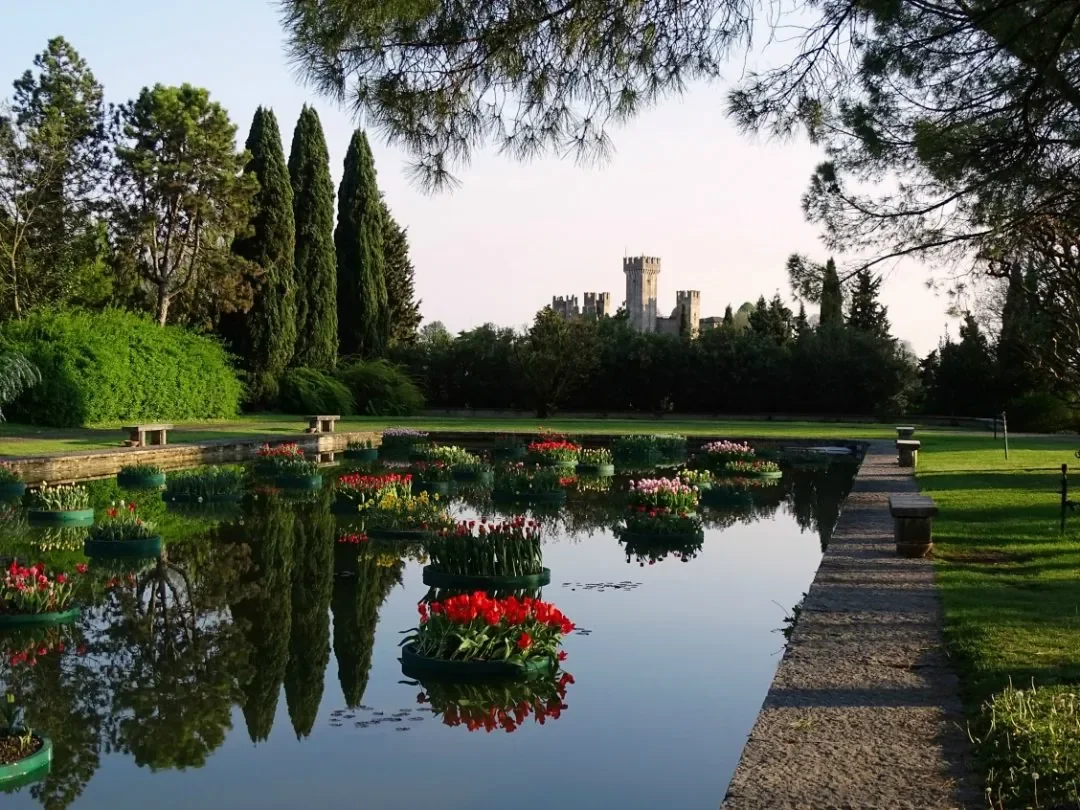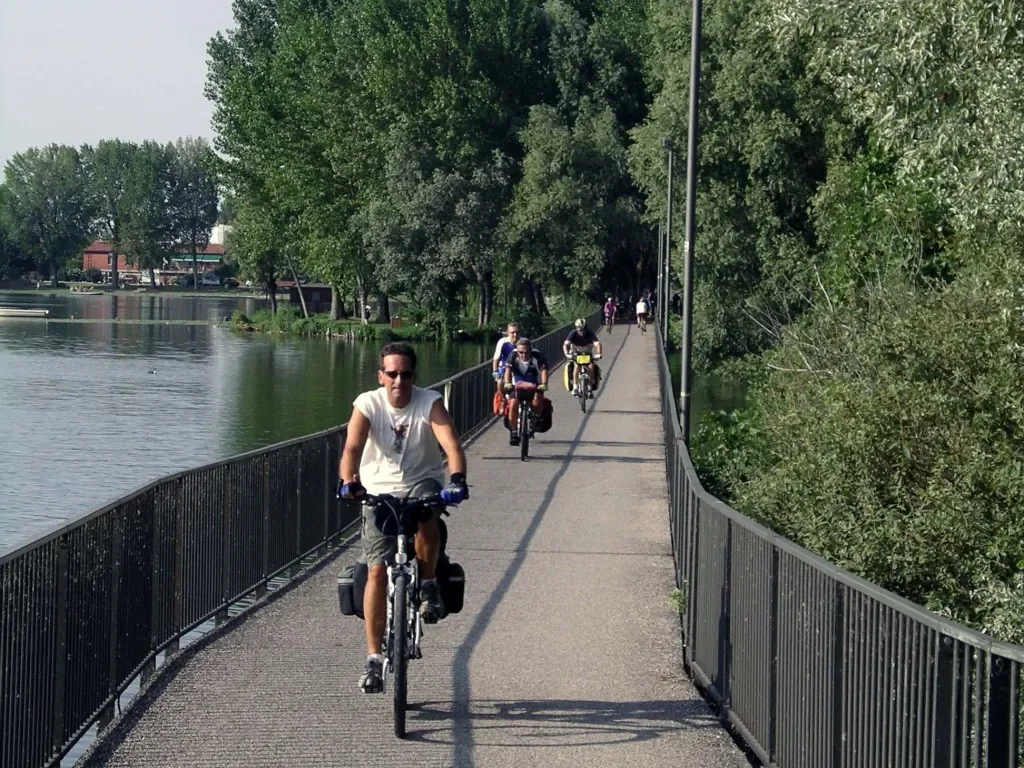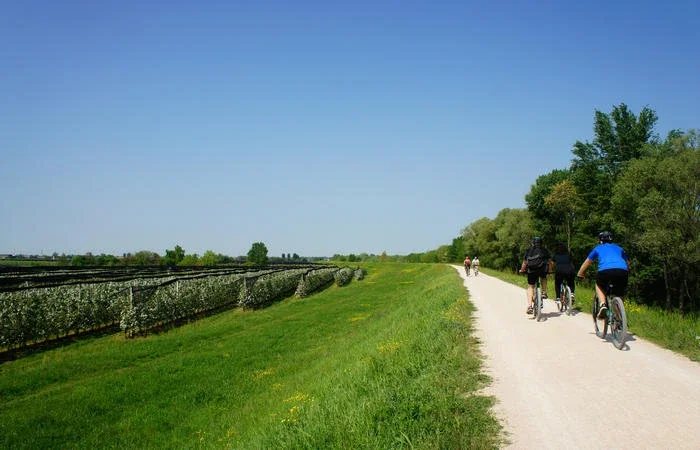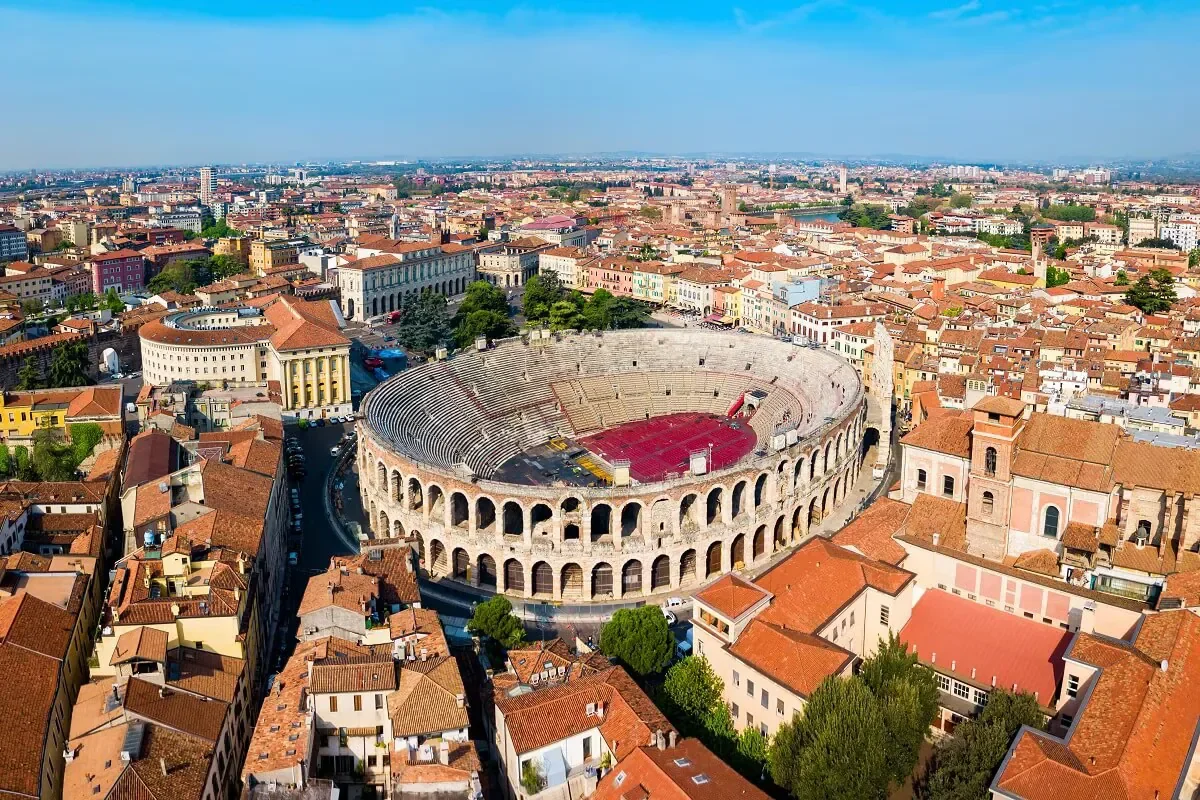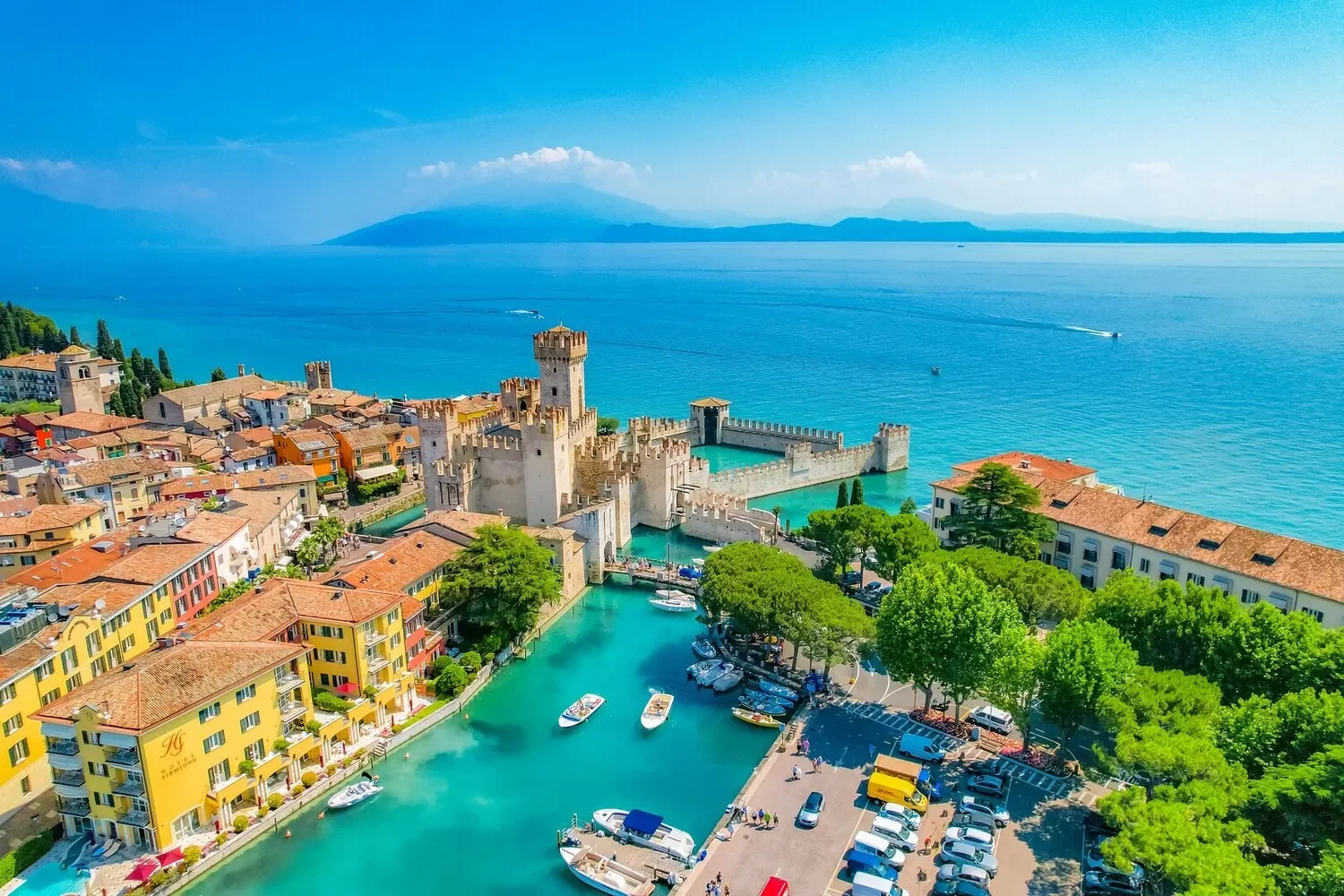
Tourism
What to visit
For centuries a crossroads between Verona, Mantua, and Lake Garda, Valeggio sul Mincio offers countless wonders to travelers who want to savor the scents and flavors of local cuisine and spend a few days surrounded by history and culture, where the Mincio flows gently through the green morainic hills of Garda.
Here, I’ll share some of my favorite destinations—just a few ideas to help you plan your stay at Corte Vale Dium.
History and culture
The history of Valeggio sul Mincio stretches back millennia. The first settlements date to prehistoric times, but it was under the Lombards that the towns of Valeggio and Borghetto took their final form and names (“Valeggio,” meaning “flat place,” and “Borghetto,” meaning “fortified settlement”).
In the Middle Ages, Valeggio became a border stronghold, as evidenced by the Castello Scaligero and the Ponte Visconteo. Later, under the Republic of Venice, it grew into a thriving center based on agriculture, grain milling, and silkworm farming.
By the 18th century, the town center had taken on its current shape. Between the late 1700s and the mid-1800s, Valeggio passed first to Napoleon’s French forces and then to the Austrians, until the 1866 plebiscite brought it into the newly unified Kingdom of Italy.
What to see
Borghetto
Just beyond the hills separating Valeggio from the Mincio river, this hamlet seems to have stepped straight out of the Middle Ages. History, mills, charming views—all under the watchful eye of the Ponte Visconteo.
Ponte Visconteo
A 600-meter-long dam and fortress crossing the Mincio River and connecting to the Castello Scaligero’s defenses. It’s the backdrop for your best Borghetto photos and a wonderful walk with panoramic views from its crenellated walls.
Chiesa di san Marco Evangelista
Built in the 18th century over the remains of a Romanesque parish church that once served as a Templar commandery, it now features a neoclassical façade. The complex also includes remains of Borghetto Castle, and with the parish priest’s permission, you can visit the old cemetery.
Castello Scaligero
After a short walk through greenery and residential villas, you’ll reach Valeggio’s landmark castle. From its walls, enjoy sweeping views over the Veronese countryside, Lombardy, and Monte Baldo.
Chiesa parrocchiale
Built in the 18th century in neoclassical style, it remains unfinished. Visit it for its Sona organ, wooden choir, frescoes, stained glass, and numerous works of art along the nave.
Curiosity: The pile of ruins you’ll see on the right side is what’s left of Valeggio’s ancient bell tower, once part of a fortified gate to the town. On the morning of January 21, 1977, the tower collapsed and was never rebuilt.
Palazzo comunale
Built on what is believed to be the oldest core of Valeggio. Its 19th-century façade overlooks Piazza Carlo Alberto and the well (known in dialect as pos de piasa).
Palazzo Guarienti
Dating back to the Renaissance, this was once home to the Guarienti marquises and now houses the municipal library. It is famed for hosting Napoleon in 1796 during his Italian campaign.
Villa Maffei
Built at the end of the 17th century, its façade marks the transition from Baroque to Neoclassical style. The interior and its three-hectare private park have recently been opened to visitors. Behind it lies the Parco Giardino Sigurtà.
Typical cousine
After exploring Valeggio’s historic landmarks, it’s time to taste its traditional cuisine.
Where to start? One word: tortellini.
Il Tortellino di Valeggio
Known locally as agnolin and poetically called the “Love Knot” (Nodo d’Amore), it’s a delicate pocket of thin egg pasta filled with braised meat. Enjoy it with butter and sage or in meat broth at any local restaurant. And if you’d like to take some home, you’ll find them freshly made in Valeggio’s pasta shops.
Certified as a traditional Italian food product, each agnolin is handmade following an ancient recipe that has conquered palates all over Europe.
It’s not just about meat—restaurants and pasta shops also offer versions filled with seasonal vegetables, cheeses, game, or fish. The only challenge is choosing.
With or without Parmesan? The key is to taste them and fall in love.
And what next?
Alongside traditional Veronese meat dishes (such as braised pork cheeks or lesso con la pearà) and lake fish specialties (like pike in sauce or sarde in saor), Valeggio also boasts sweet treats like zaletti and torta delle rose.
Zaletti
Zaletti are golden cookies made with corn flour, raisins, and pine nuts, typically found in local bakeries and pastry shops in autumn.
Torta delle Rose
Torta delle rose (“rose cake”) gets its name from its shape, resembling a bouquet of rosebuds. The rich dough, made with butter and sugar, is rolled into small roses and arranged in a pan. Slow rising and baking give it the look of blooming petals.
And the wine?
Beyond the local whites and reds wines—like Custoza D.O.C., savory with almond notes, and Bardolino D.O.C., fruity and savory—Valeggio’s restaurants and wine bars will recommend the finest selections from Valpolicella and beyond.
Nature and cycle tourism
Surrounded by lush hills, bordered by the Mincio River on one side and farmland on the other, Valeggio is a paradise for cycling and long walks in the quiet beauty of nature.
Parco Giardino Sigurtà
A world-famous botanical and landscape park just steps from Corte Vale Dium. Open daily from March to November, it delights visitors with a symphony of colors and scents.
For more information, visit its official website.
Cycle Path E6 / EuroVelo 7
A 45 km cycling and walking route that follows the old Mantua–Peschiera railway line (Littorina). Ideal for exploring woods, meadows, and ponds along the Mincio River.
The Valeggio stage starts in Borghetto, at the foot of the Ponte Visconteo. Head north to Peschiera or south toward the Lakes of Mantua.
For more information, visit this page.
Custoza Lands Loop
A 65 km route winding through the Veronese countryside, vineyards, historic farmsteads, and Italian Unification landmarks across the towns of Villafranca di Verona, Valeggio sul Mincio, Custoza, Sommacampagna, Sona, and Bussolengo.
A detailed map in Italian, English, and German is available at the Pro Loco office in Valeggio’s Town Hall.
For more information, visit this page.
Risorgive Cycle Path
This 35 km route leads from the banks of the Mincio to the Adige River between San Giovanni Lupatoto and Zevio, passing through Villafranca di Verona, Povegliano, Vigasio, Castel d’Azzano, and Buttapietra.
Along gentle dirt paths through farmland, you can admire the Fontanili—natural water springs typical of the Po Valley.
For more information, visit this page.
Crossroads of cities and lakes
Verona
distance: 28 km
Did you think about Romeo and Juliet? Forget them for a moment and enjoy the beauty of one of Italy’s most fascinating historic centers. The Arena and Piazza Bra, Castelvecchio, Piazza Erbe, Ponte Pietra, and the Teatro Romano are just the highlights of a city that enchants you at every corner—with Roman, medieval, and modern elements blending perfectly.
A tip? Climb up to San Pietro Hill and watch the sunset over the city—it will take your breath away.
Lake Garda
distance: 12 km
Just a lake? Far from it.
To the south, sandy beaches; to the north, Monte Baldo and the Alto Garda Bresciano Park. Along the shores, dozens of villages and medieval towns are waiting to be explored, all sharing one thing: breathtaking views wherever you look.
Sirmione, Peschiera, Bardolino, Lazise, Malcesine, and Limone sul Garda (to name just a few) will win your heart with their magical atmosphere, perfectly balancing past and present.
Enjoy the many water activities, the local cuisine, the spas, and the cultural and natural excursions—not to mention the Parco Natura Viva.
Still not enough? Gardaland is right nearby!
Mantua
distance: 29 km
Just a few kilometers beyond the Lombardy border, south of Valeggio sul Mincio, lies the city of the Gonzagas and Mantegna.
Mantua is rich in art and history—simply walking through its streets and squares lets you breathe in its solemn atmosphere. Palazzo Ducale, with its 500 frescoed rooms, is a monumental masterpiece, as are Palazzo della Ragione, Palazzo del Podestà, the Cathedral, the Clock Tower, and Palazzo Te with its gardens.
If you need a break from the city’s alleys, take a peaceful stroll along the lakeside paths that border Mantua’s lakes.
Looking for an apartment to enjoy your vacation?
Corte Vale Dium is waiting for you.

